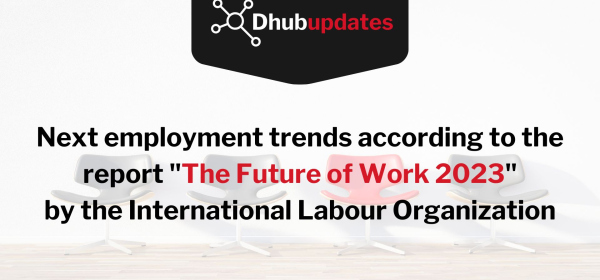In the report "The Future of Work 2023", the International Labor Organization (ILO) establishes some important trends regarding work in the coming years. The report discusses the enormous challenges facing labor markets in 2023. The global outlook for labor markets has deteriorated significantly during 2022 due to emerging geopolitical tensions, conflicts in Ukraine, an uneven recovery from the pandemic, and bottlenecks in supply chains. All of this has set the stage for an episode of stagflation, the first time since the 1970s that a period of high inflation and low growth has occurred simultaneously. Policymakers face a difficult balancing act as they grapple with high inflation in an environment of incomplete job recovery. Most countries have not yet returned to the levels of employment and hours worked seen in late 2019, before the outbreak of the COVID-19 health crisis. However, a series of supply shocks, mainly in food and commodity markets, have raised producer prices, leading to spikes in consumer price inflation and prompting major central banks to adopt a tighter policy stance. In the absence of corresponding increases in labor incomes, the cost-of-living crisis directly threatens household livelihoods and risks depressing aggregate demand. Many countries have accumulated a significant amount of debt, in part to address the severe consequences of the pandemic, and the risk of a global debt crisis is high, jeopardizing the fragile recovery in many frontier markets.
1. The importance of technology: Technology will continue to be a determining factor in the world of work, as more and more tasks will be automated and digital skills will be required to perform in the labor market. In addition, technology is expected to have an impact on the creation and destruction of jobs.
2. Demographic changes: The aging of the population and the decrease in the birth rate are two factors that will influence the labor market in the coming years. This may generate a smaller supply of workers and a greater demand for specific skills, which could impact job creation.
3. Economic inequality: Economic inequality will continue to be a major issue in the future, and is expected to continue to increase. This may generate social and political tensions and affect people's quality of life.
4. Changes in the organization of work: Work is expected to be organized more flexibly in the future, with the possibility of working from anywhere with an internet connection. In addition, self-employment is expected to increase and job stability to decrease.
5. Changes in training and education: Training and education will be critical to adapt to changes in the labor market. Continuing education is expected to become increasingly important to stay current and acquire new skills.
6. Changes in social protection: Social protection will have to adapt to changes in the labor market, as many workers will be in more precarious situations. Public policies will be required to ensure adequate social security for all workers.
In summary, the ILO report shows that the labor market will continue to change in the coming years. Technology, demographic changes, economic inequality, work organization, training and education, and social protection will be important issues to consider for individuals, companies and governments. In this context, it will be essential to adapt to change, acquire new skills and be prepared for the new forms of work that will arise.













